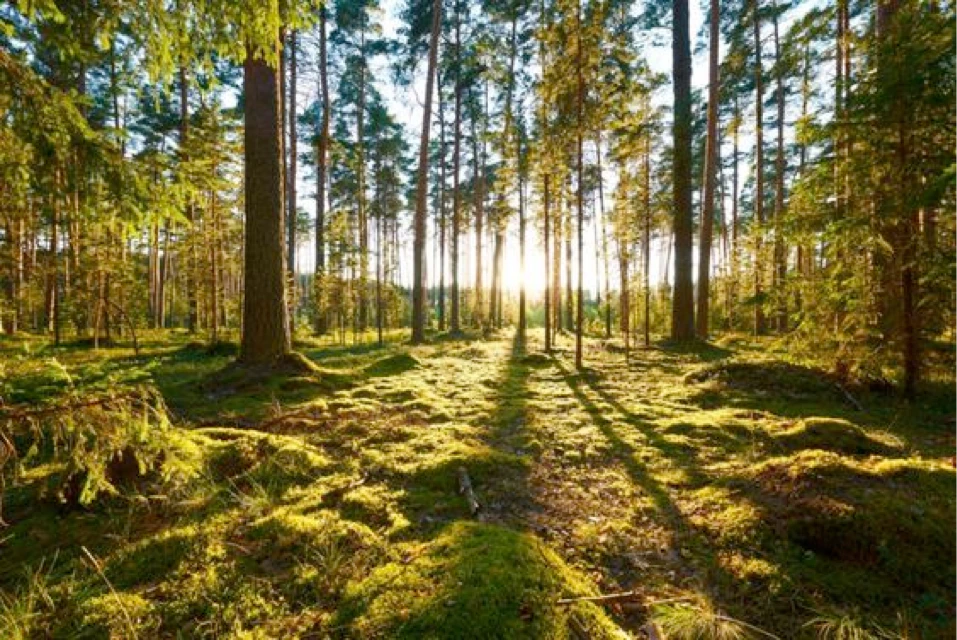Measuring, Reporting, and Verification of Forest Restoration
2.1 Forest and vegetation surveys

A standardised forest monitoring framework combines tree age‐structure, understorey vegetation and deadwood surveys to gauge ecological recovery: age distributions reveal successional dynamics, understorey plots track habitat quality, and deadwood counts indicate structural complexity. Data are collected via permanent plots and transects following European inventory protocols, then converted using allometric equations (e.g., DBH to biomass) and metrics like basal area and Gini coefficients to produce comparable indicators for restoration assessment.
2.1.1 Rationale
Inventories of tree age structure, understorey vegetation, and deadwood are widely recognised as robust indicators of forest ecological condition and are closely linked to recovery following restoration. Tree age structure reflects the successional stage and regenerative dynamics of a forest; a diverse age distribution, including seedlings, mature trees, and old-growth individuals, indicates a healthy and self-sustaining forest, while even-aged stands often signal past disturbance or intensive management (Franklin et al., 2002). Understorey vegetation responds rapidly to changes in microclimate, soil conditions, and canopy cover, making it a sensitive indicator of ecological integrity; its composition and diversity often correlate with habitat quality and the presence of key ecological processes such as nutrient cycling and pollination (Gilliam, 2007; Hämäläinen et al. 2023). Deadwood, including snags and coarse woody debris, plays a critical role in maintaining biodiversity by providing habitat for fungi, invertebrates, birds, and mammals, and its abundance is strongly associated with late-successional or old-growth forests (Bujoczek et al. 2021). In the context of restoration, increases in structural complexity, species diversity, and functional components such as deadwood reflect a trajectory toward more natural, resilient ecosystems (Larrieu et al. 2018). Together, these indicators provide a comprehensive picture of forest recovery by integrating biotic and abiotic factors, enabling ecologists to evaluate the success of restoration practices and adapt management strategies accordingly.
2.1.2 Survey methods
In Europe, forest ecological assessments commonly use standardised methodologies to ensure consistent, comparable data collection for forest inventories and plant surveyss. For forest inventories, systematic or stratified random sampling designs are favoured, often with permanent or semi-permanent plots established at regional or national levels, such as those used in the European National Forest Inventory programs (Tomppo et al. 2010; Vidal et al.2016).
These designs allow for monitoring tree growth, mortality, regeneration, and structural attributes over time between others. For understorey vegetation and plant diversity surveys, nested quadrat or transect-based methods are commonly applied, among other methods, often following protocols like the ICP Forests Level II methodology (ICP Forests, 2020a). Understorey vegetation assessments often utilise fixed-area plots, with sizes ranging from 1 m² to 100 m², to capture species composition and abundance. The Braun-Blanquet approach is commonly applied, employing cover-abundance scales to quantify species presence and dominance. Protocols like those from the ICP Forests Level II program provide detailed guidelines for such surveys, emphasising consistency in plot selection and data recording (ICP Forests 2020b). Deadwood surveys in NFIs frequently follow protocols that categorise wood by fragment type, diameter, length, decay stage, and position (standing vs. lying) (Böhl and Brändli, 2007; Moreno-Fernandez et al. 2024). These harmonised methodologies enhance cross-country comparisons and are integral to long-term ecological monitoring and restoration evaluation across European forest ecosystems.
2.1.3 Data collection to data reporting
The monitoring of tree diversity and forest structure is a key pre-requisite for understanding and managing forest ecosystems. To derive meaningful ecological and forestry metrics from forest inventory data, such as those indicative of restoration progress or forest structure (e.g., aboveground biomass and stand density), raw measurements must be transformed using allometric equations and standardised calculations (Corona et al 2011). Tree-level data, including diameter at breast height (DBH), species identity, and occasionally tree height, are first converted to basal area, which provides a per-tree or per-hectare measure of wood density and is a proxy for competitive interactions and successional stage. Aboveground biomass is then estimated using species- or region-specific allometric equations that relate DBH, height, and wood density to dry mass (Ziais et al. 2005). Size hierarchy among trees growing in the vicinity influences competition processes in the forest community, for which the Gini coefficient is considered a robust measure of size inequality (Valbuena et al. 2012). The development of many more indicators is being tailored to those specified in the EU Nature Restoration Regulation and the proposal for EU Forest Monitoring Regulation.

